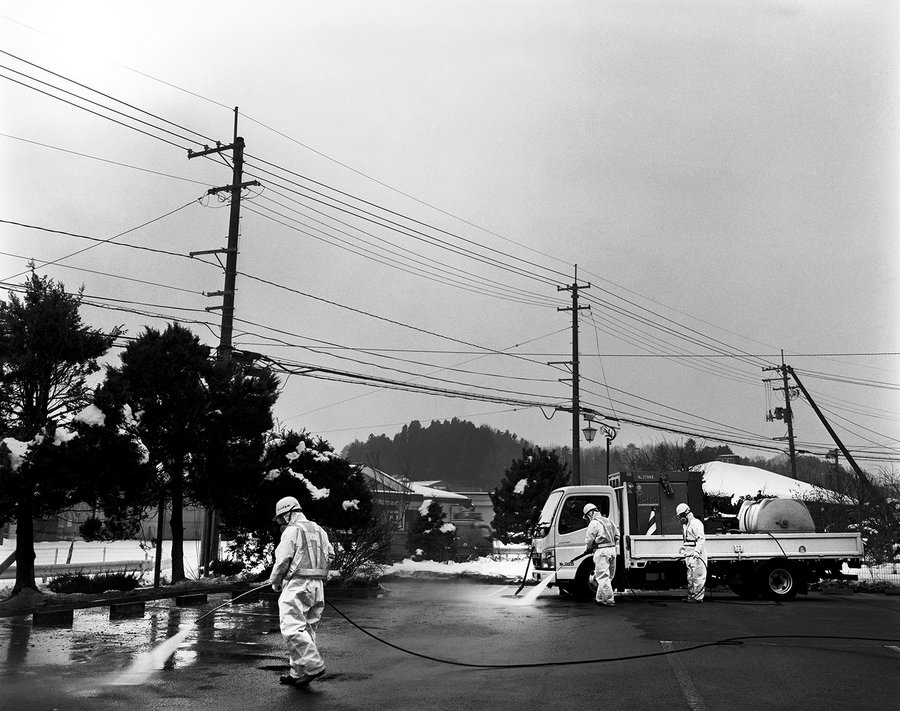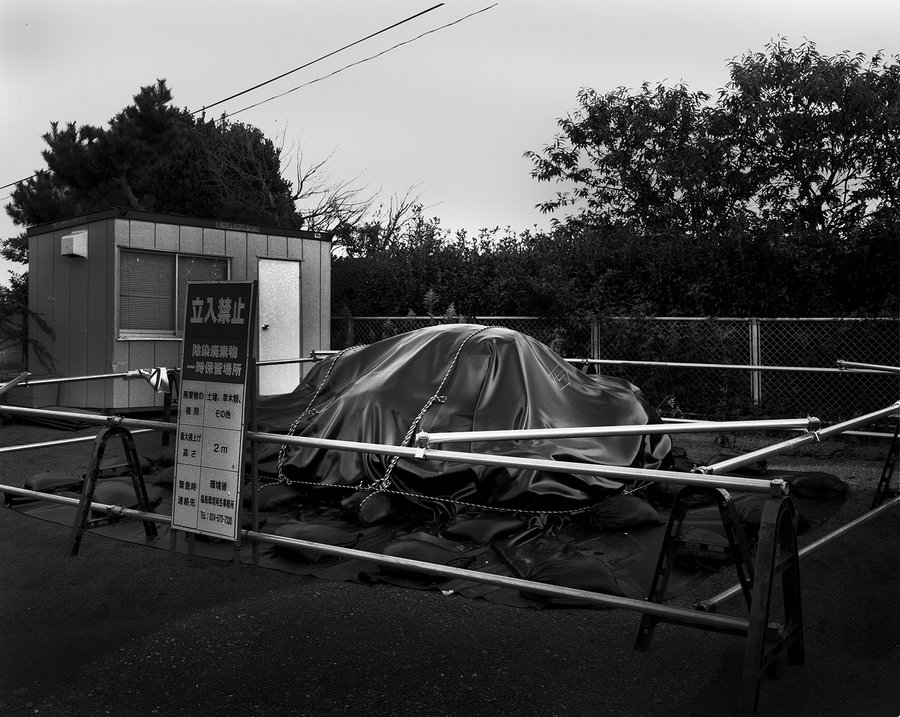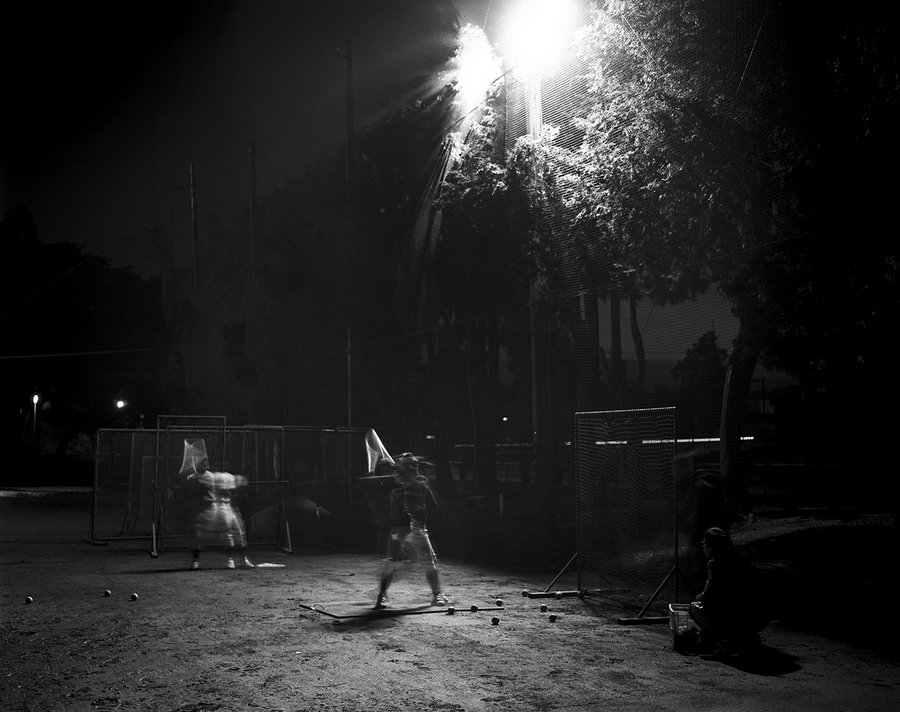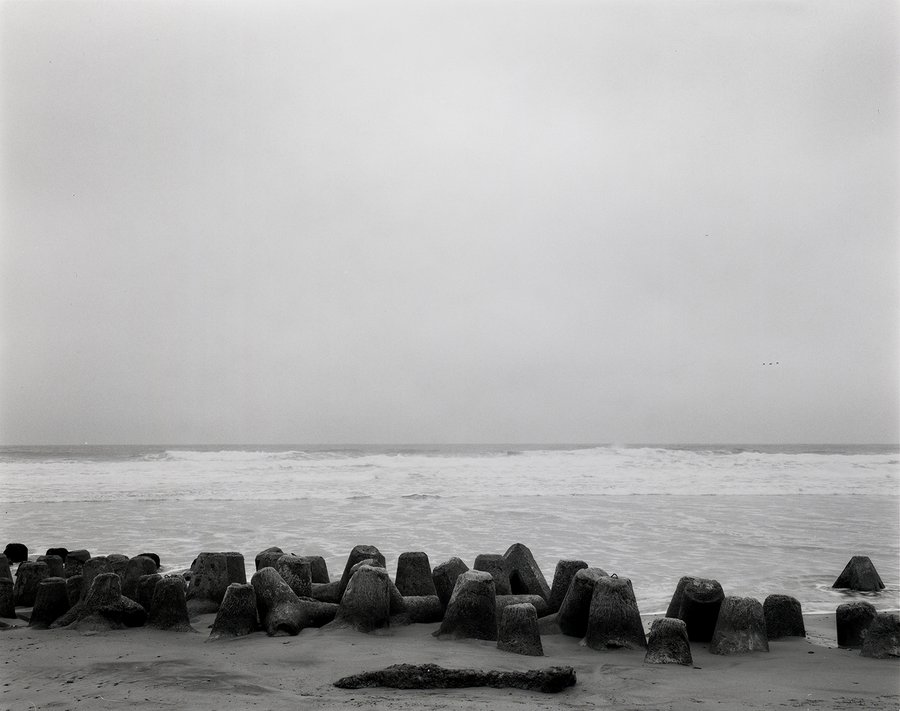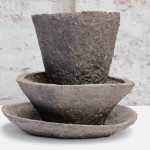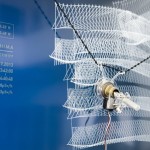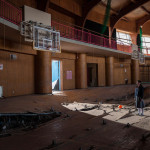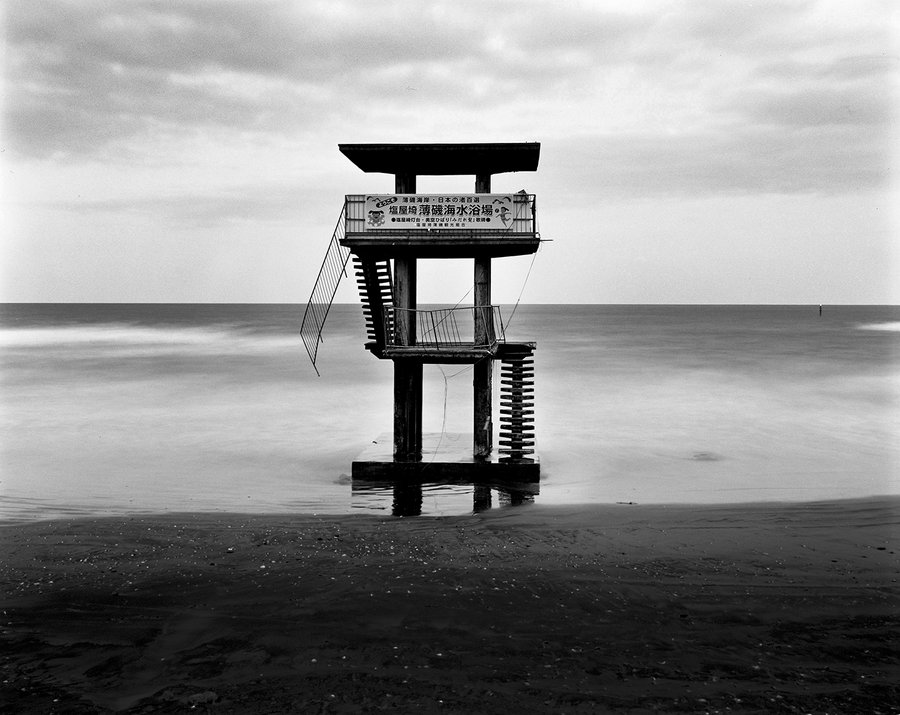
Sea in Iwaki city. Normally here people can swim. The fishermen’s society decided no to fish since the result of examination of sea water and seafood is very much contaminated by the radioactive substances. One of the chair said “Do not eat any seafood up north from Chiba prefecture” He said some seafood had 14,000 bq /kg contamination level .
The photographer Kosuke Okahara first set foot in a town near the Fukushima Daiichi Nuclear Power Plant almost immediately after the disaster in March of 2011. In August he began visiting more periodically and for the next 4 years Okahara continued to visit Fukushima almost every month.
“Little by little,” he says, “I began collecting fragments from the Fukushima disaster. Now, at a time when most media coverage has faded, the 35-year old photographer is releasing a photobook of “scenes that would linger in time, just like the radiation that lingered in Fukushima.”
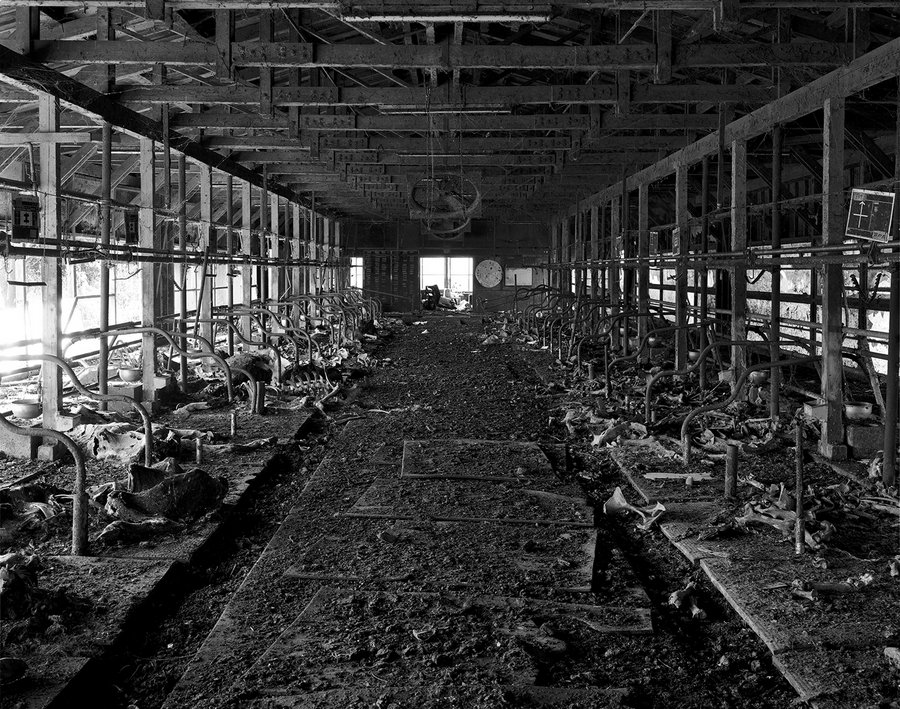
An abandoned farm inside 20km exclusion zone from the Fukushima Daiichi nuclear reactor. Dead cows are still lying in the farm.This place was visited by the photographer in April 2011 and it was left as it was before.
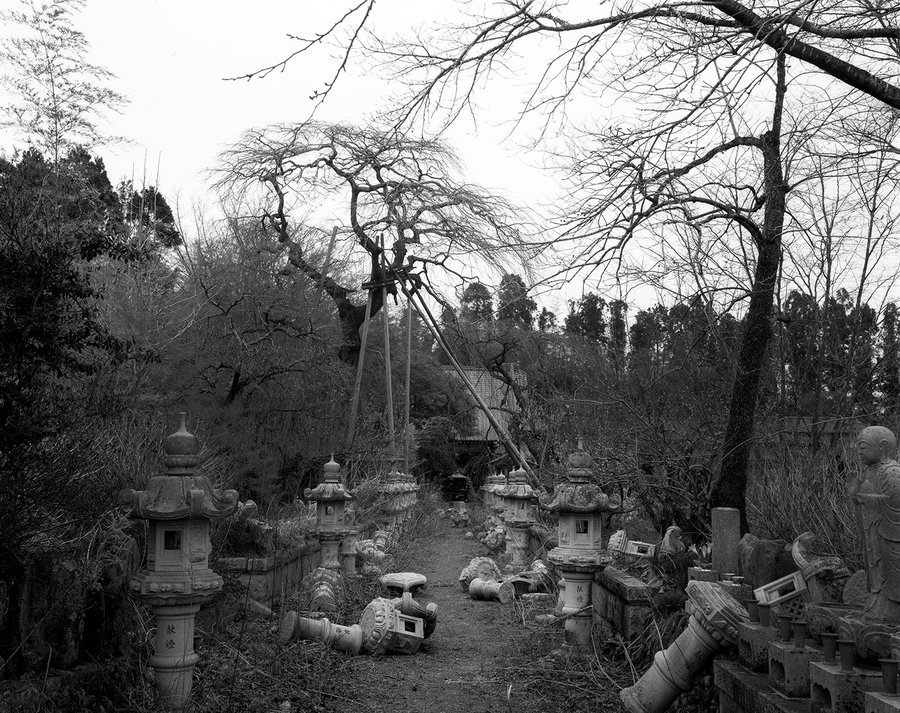
Stone lanterns in the shrine just few hundred meters outside of the exclusion zone left as it fell 2 and half years ago when Great Tohoku earthquake hit Japan.
In 2012 Okahara won a grant from Getty Images to complete his project. Now, the beautifully-printed 176-page Fukushima Fragments is being published by the French La Martinière group.
Fukushima Fragments includes haunting photos of a land sapped of life. But rather than make up a narrative, the book simply attempts to capture – to borrow from Okahara himself – “fragments” for comprehending such a disaster, and making sense of it, is not possible. The book stands as a testament to what happened, for future generations “to come to terms with what this disaster truly means.”
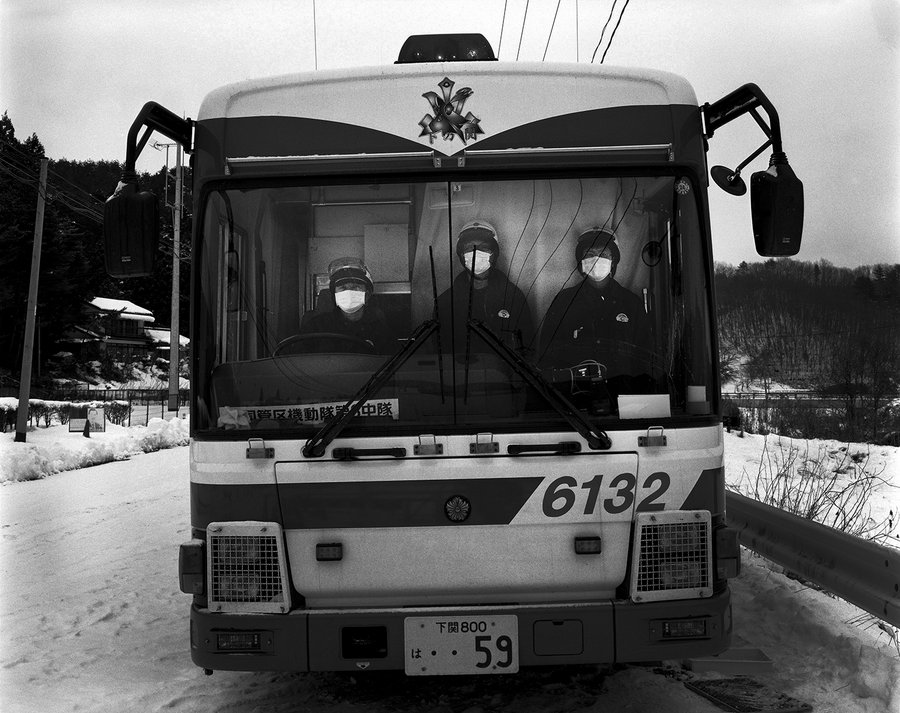
Three police officers at the check point of Tsushima district of Namie town located about 27km from Fukushima Daiichi nuclear reactor.
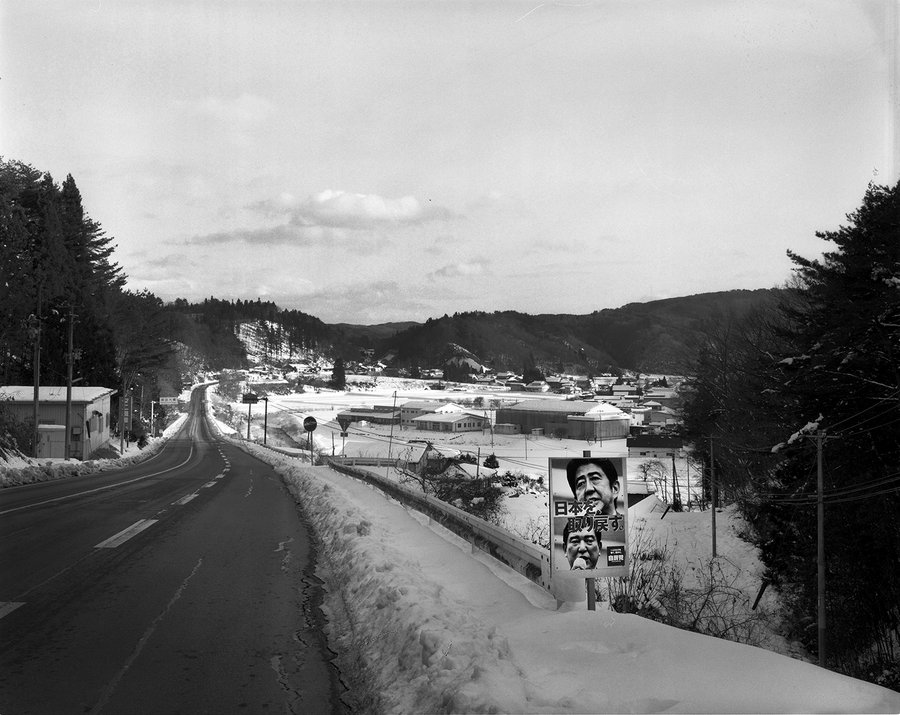
Miyakoji district of Tamura city. some 25km west of the Fukushima Daiichi Nuclear plant now facing the problem of being depoplulation
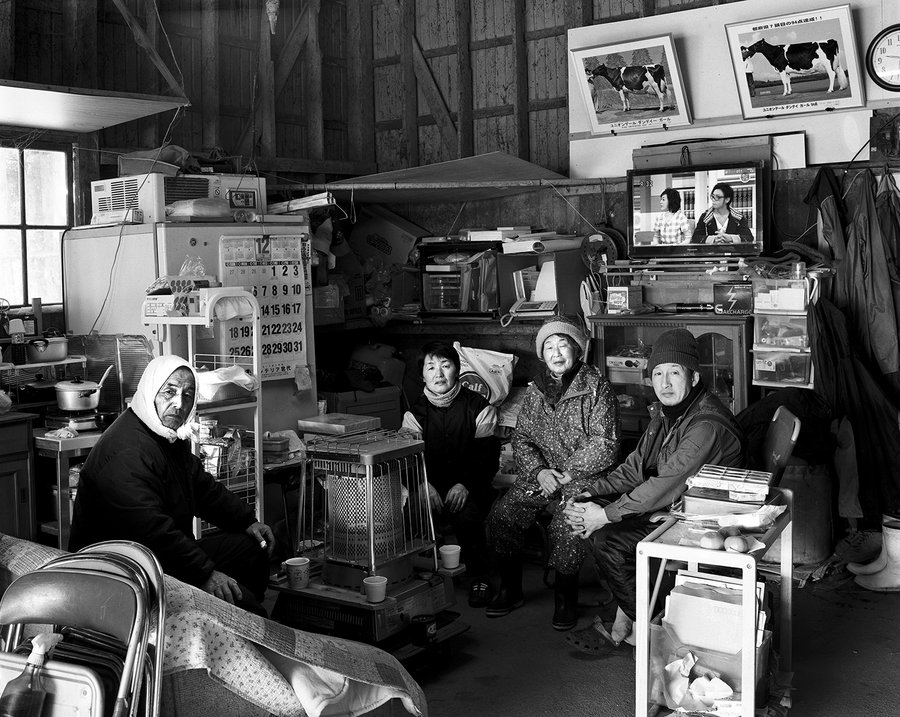
A portrait of Sanpei family at their new farm where they moved their cow from the high radiation area which was 26km from the reactor.

